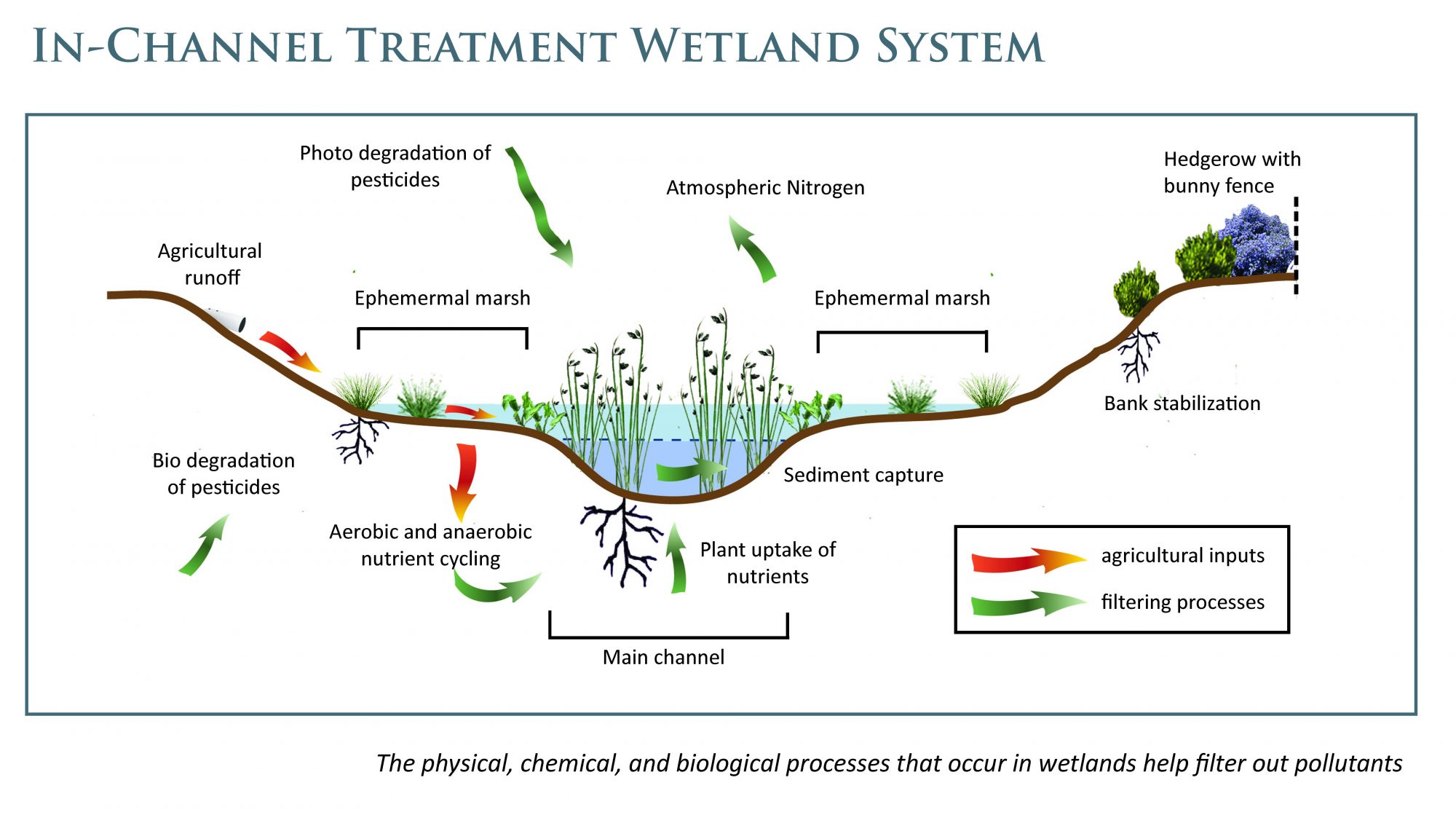Wetlands
Wetlands are lands where saturation with water is the dominant factor determining the nature of soil development and the types of plant and animal communities living in the soil and on its surface (Cowardin, December 1979). In California there are many different types of wetlands which each provide unique and important habitat and ecological services. Types of wetlands include: Rivers/creeks/streams, estuaries, lagoons, vernal pools, lagoons, swamps, ponds, lakes, sloughs, marshes and many more. They can have freshwater, brackish water, and saltwater and can be wet year round or be dry for some of the year.
Why We Love Wetlands
Wetlands are a hugely important natural resource, providing environmental services we depend on, without asking anything in return. According to the USEPA "Wetlands are part of the foundation of our nation's water resources and are vital to the health of waterways and communities that are downstream. Wetlands feed downstream waters, trap floodwaters, recharge groundwater supplies, remove pollution, and provide fish and wildlife habitat. Wetlands are also economic drivers because of their key role in fishing, hunting, agriculture and recreation."
Benefits of Wetlands
Water Quality Improvements
Wetlands filter pollutants from water, cleaning it so it is safe for humans and wildlife. For more information, visit our Water Quality project page.
Habitat
Wetlands are lands where saturation with water is the dominant factor determining the nature of soil development and the types of plant and animal communities living in the soil and on its surface (Cowardin, December 1979). In California there are many different types of wetlands which each provide unique and important habitat and ecological services. Types of wetlands include: Rivers/creeks/streams, estuaries, lagoons, vernal pools, lagoons, swamps, ponds, lakes, sloughs, marshes and many more. They can have freshwater, brackish water, and saltwater and can be wet year round or be dry for some of the year.
Freshwater Retention and Storage
Freshwater is a precious resource in much of California that does not naturally have enough water to support the population that lives there. Southern California has to supplement its water supply with water from the North and from the Colorado River; the San Francisco Bay depends on water from Yosemite. On the Central Coast we have been able to supply much of our own water. Growing population, increasing agriculture and the potential impacts of climate change all threaten this ability leading to the need to retain and store water as much as possible. Wetlands can slow freshwater, spread it over a wide area and allow it to percolate into groundwater where it can be stored until needed.
Using Wetlands For Water Quality Improvement
Introduction to treatment wetlands
Wetlands, whether naturally occurring or designed for treatment purposes, have an incredible ability to improve water quality through filtering and breakdown of nutrients, pesticides and other pollutants. Vegetated treatment wetlands have been used to treat wastewaters worldwide for over 50 years and have been proposed as a best management practice for water quality improvement in the Moro Cojo, Elkorn Slough and Salinas Valley watersheds (Vymazal, 2010; Habitat Restoration Group, 1996; ABA consultants, 1989).
Constructed Wetlands
Constructed treatment wetlands (CTWs) are categorized by vegetation, hydrology and flow direction and may be arranged as single stage or multi-stage hybrid systems (Vymazal, 2007; Vymazal 2010). To enhance water treatment capabilities, treatment wetlands are planted with multiple types of vegetation and water retention times and flow rates into wetlands are managed to optimize biological processes removing pollutants from waters (García-Lledó, 2011; Thullen et al, 2005; Poe et al, 2003; Beutel et al, 2009). Treatment wetlands can also be constructed to enhance wildlife habitat while adhering to local food safety and pest management measures.
For More information on one of CCWG's treatment wetlands, click here
Considerations
Things that are important to consider when designing treatment wetlands include
- Nitrogen species (ammonia, nitrate, nitrite) and relative concentrations in incoming water
- Are there pesticides?
- Is there heavy metal contamination?
- Size of the watershed and volume of water to be treated in relation to residence time in wetland
- Soil chemistry and properties (i.e. clay, sandy, porosity)
- Food safety guidelines for adjacent farmlands
- Maintenance required for upkeep
- Pumping water into ponds or gravity fed
- Weed removal/vegetation restoration/erosion control
- Will plants be harvested for nitrogen removal or left to become carbon as leaf litter?
How Treatment Wetlands Work


